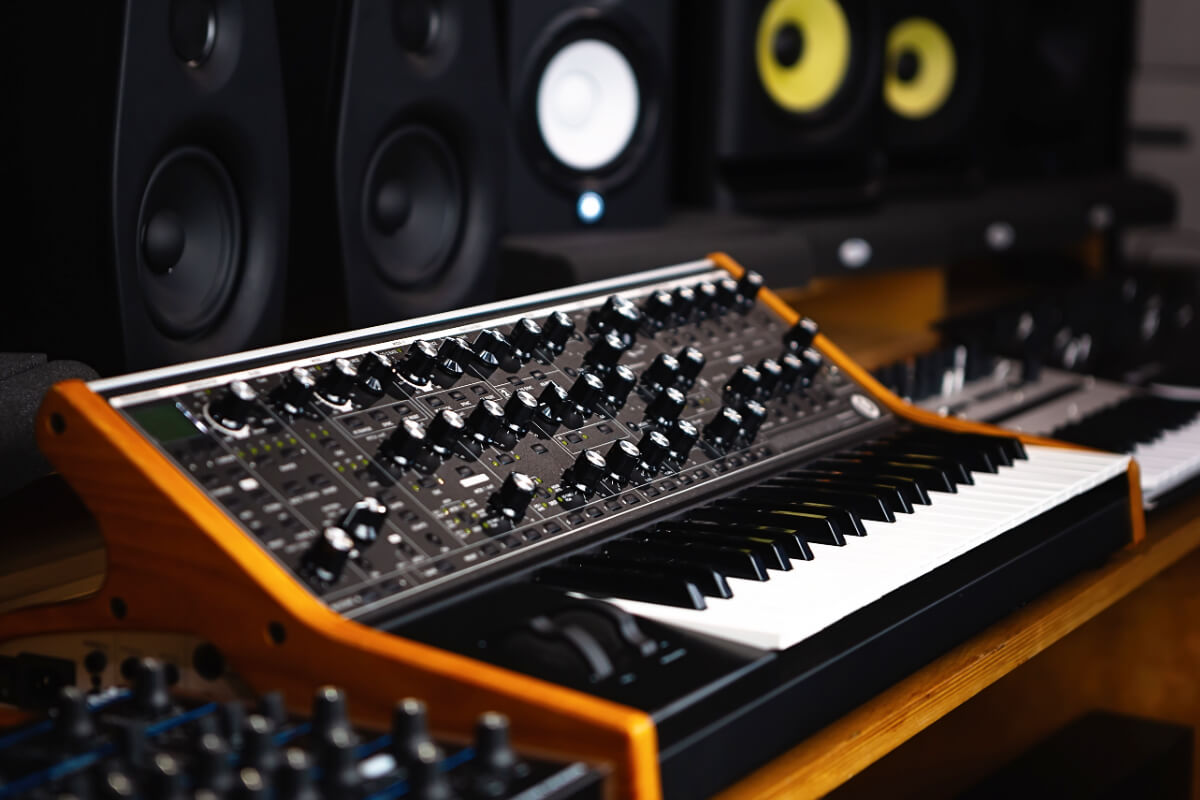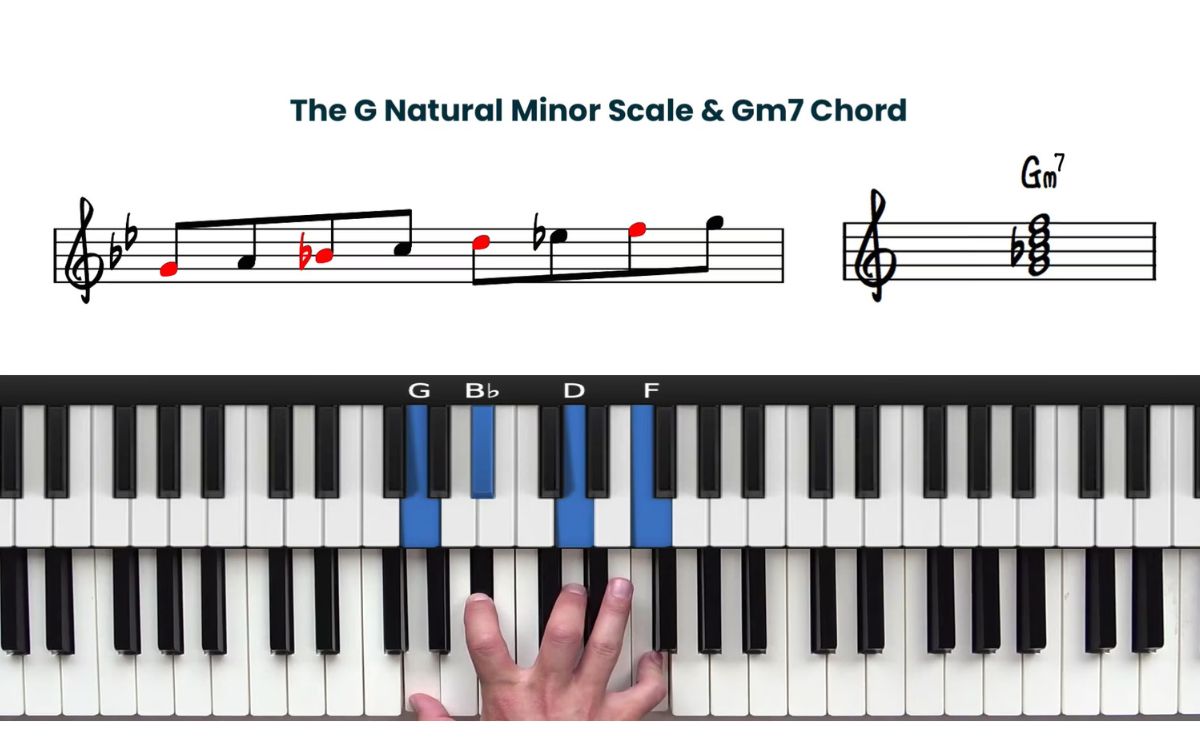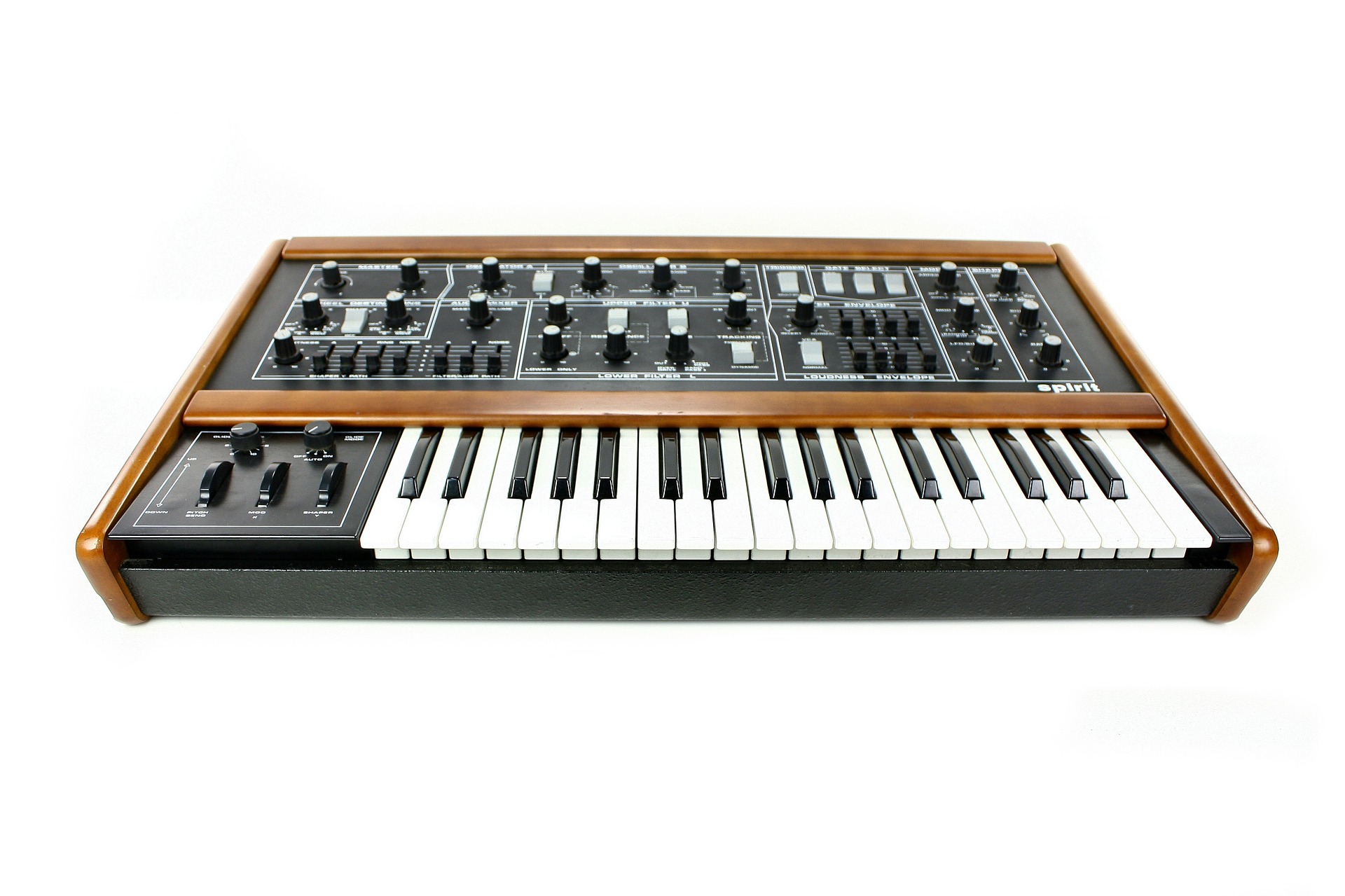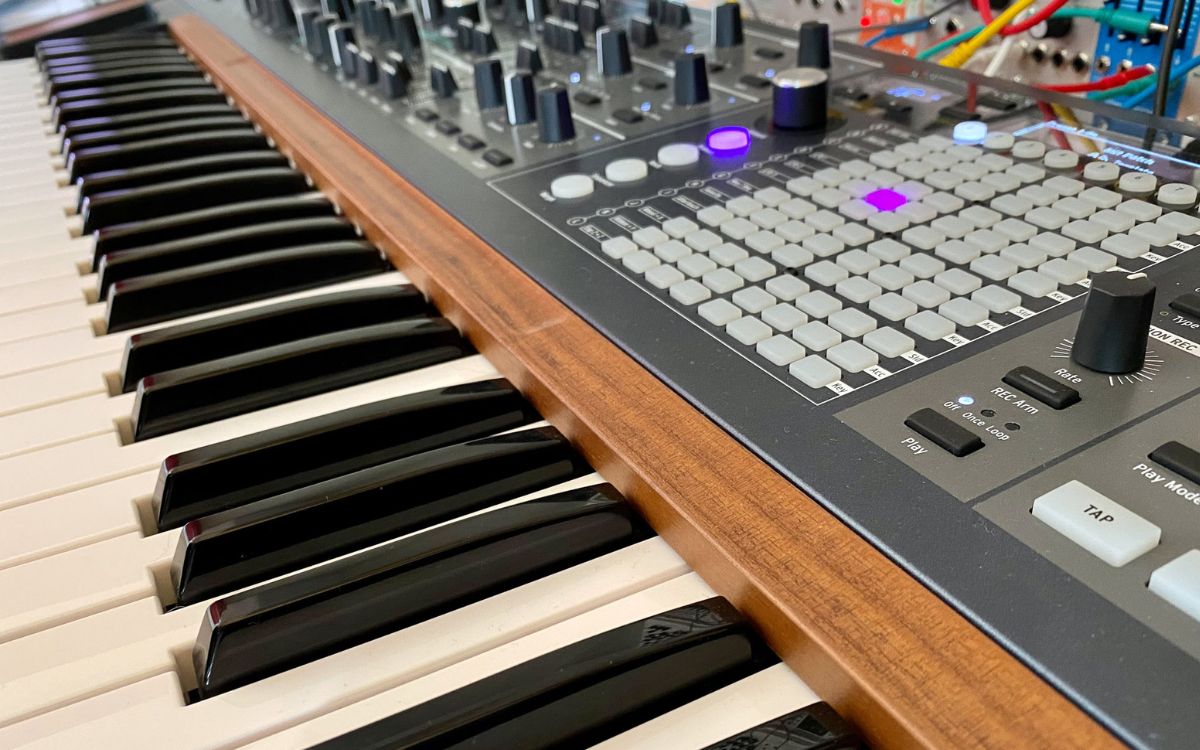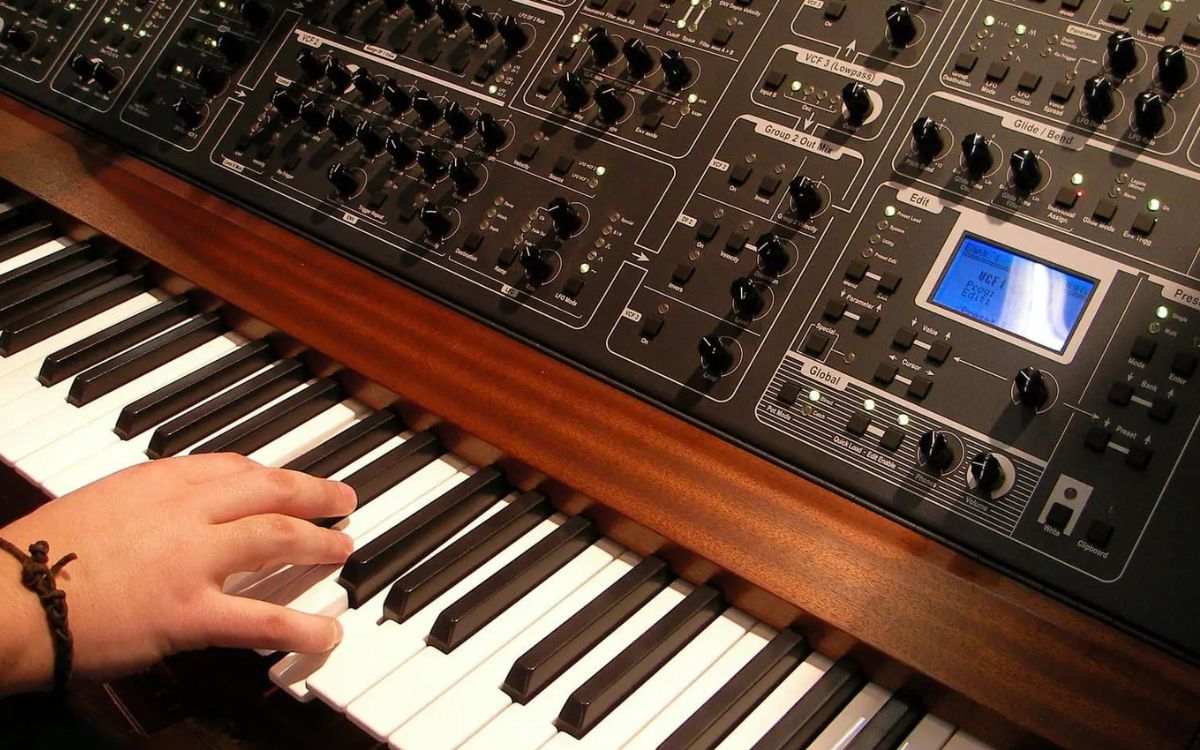Home>Instruments>Synthesizer>What Is A Mhz Synthesizer
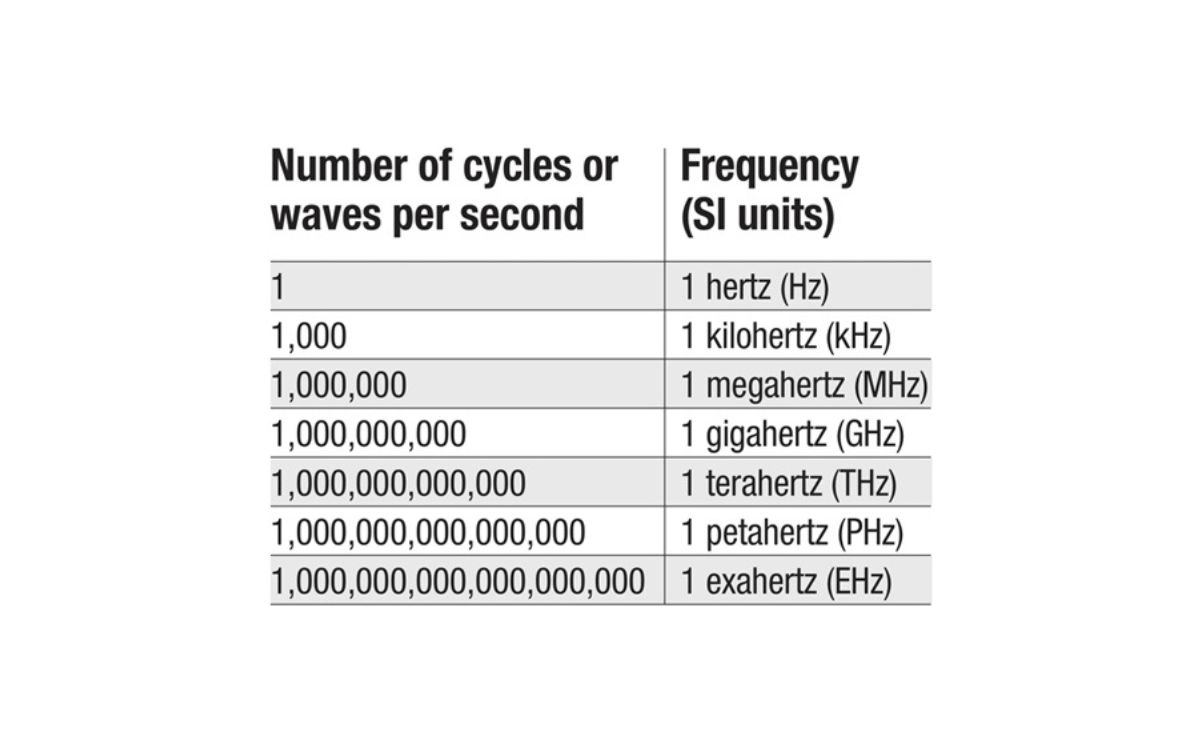

Synthesizer
What Is A Mhz Synthesizer
Published: December 11, 2023
Discover the wonders of a MHz synthesizer and unlock endless musical possibilities. Explore the power of this versatile instrument and create unique sounds with ease.
(Many of the links in this article redirect to a specific reviewed product. Your purchase of these products through affiliate links helps to generate commission for AudioLover.com, at no extra cost. Learn more)
Table of Contents
Introduction
Welcome to the world of MHz synthesizers! In this article, we will explore what a MHz synthesizer is, delve into its inner workings, and discover its diverse applications. Whether you are a musician, a telecommunications engineer, or simply a curious enthusiast, understanding MHz synthesizers will open up a whole new realm of possibilities.
So, what exactly is a MHz synthesizer? Put simply, it is a device that generates high-frequency signals with frequencies in the mega (MHz) range. These signals can be used for a variety of purposes, from enabling precise tuning in musical instruments to facilitating reliable communication in wireless systems.
The MHz synthesizer is a key component in many electronic systems, providing a stable and accurate source of high-frequency signals. Its ability to generate signals within a wide range of frequencies makes it an indispensable tool in various industries.
In the following sections, we will explore the fundamental workings of MHz synthesizers, discuss their applications, advantages, and disadvantages, and compare them to other types of synthesizers. Let’s dive in!
Definition of MHz Synthesizer
A MHz synthesizer, also known as a megahertz synthesizer, is an electronic device that generates high-frequency signals with frequencies in the mega (MHz) range. It is a versatile tool used in various applications, including telecommunications, radar systems, scientific research, and music production.
The primary function of an MHz synthesizer is to generate signals at precise frequencies and with high stability. It achieves this by combining lower-frequency signals, typically in the kilohertz (kHz) or low MHz range, and using various techniques to synthesize the desired output frequency.
An MHz synthesizer typically consists of several key components, including a reference oscillator, a frequency divider, a phase-locked loop (PLL), and a voltage-controlled oscillator (VCO).
The reference oscillator serves as the stable frequency source and generates a signal at a fixed frequency, such as 10 MHz. This signal acts as a reference for generating the desired MHz output frequency.
The frequency divider plays a crucial role in MHz synthesizers. It takes the reference frequency and divides it down to a lower frequency, such as 1 MHz or 100 kHz. This division is necessary for achieving fine frequency resolution and enabling the generation of signals within the desired MHz frequency range.
The phase-locked loop (PLL) is responsible for comparing the output of the frequency divider with the desired MHz frequency. It adjusts the frequency and phase of the divided signal using feedback control, ensuring that the output frequency precisely matches the desired frequency.
The voltage-controlled oscillator (VCO) is a key component in the MHz synthesizer. It generates signals within the MHz frequency range and is controlled by the PLL. The VCO’s frequency can be adjusted by varying the control voltage applied to it, allowing for precise frequency tuning.
Overall, the MHz synthesizer is a powerful tool that combines various components and techniques to generate high-frequency signals with accuracy and stability. Its versatility and wide range of applications make it an essential device in many industries.
How MHz Synthesizers Work
MHz synthesizers work by employing various techniques to generate high-frequency signals within the mega (MHz) range. Let’s explore the inner workings of these synthesizers to better understand their functionality.
At the heart of an MHz synthesizer is a reference oscillator that generates a stable signal at a fixed frequency, typically in the kilohertz (kHz) or low MHz range. This reference frequency serves as a baseline for generating the desired MHz output frequency.
The first step in the synthesis process is to divide the reference frequency down to a lower frequency using a frequency divider. This division allows for finer frequency resolution and enables the generation of signals within the desired MHz range.
Next, the divided signal is compared to the desired MHz frequency using a phase-locked loop (PLL). The PLL generates a control voltage that adjusts the frequency and phase of the divided signal to match the desired frequency. The feedback control mechanism of the PLL ensures that the output frequency remains stable and accurate.
The adjusted signal from the PLL is then sent to a voltage-controlled oscillator (VCO). The VCO generates signals within the MHz frequency range and is controlled by the PLL. By varying the control voltage applied to the VCO, the frequency of the output signal can be finely tuned.
In some MHz synthesizers, additional circuitry may be included to enhance signal quality and minimize phase noise. These circuitry can include filters, amplifiers, and phase-locked loop multipliers.
Overall, MHz synthesizers use the combination of a reference oscillator, frequency divider, PLL, and VCO to generate high-frequency signals within the desired MHz range. The precise control of frequency and phase ensures accurate signal generation, making MHz synthesizers valuable tools in various applications.
Applications of MHz Synthesizers
MHz synthesizers find applications in a wide range of industries and fields due to their ability to generate high-frequency signals with accuracy and stability. Let’s explore some of the key applications where MHz synthesizers play a vital role:
1. Telecommunications: MHz synthesizers are essential in wireless communication systems, including cellular networks, satellite communications, and radio frequency (RF) devices. They enable precise frequency tuning and synchronization, ensuring reliable and efficient communication.
2. Radar Systems: MHz synthesizers are employed in radar systems for generating and receiving high-frequency signals used in target detection, tracking, and imaging. They provide the necessary frequency agility and stability to accurately measure distance, speed, and direction.
3. Scientific Research: In scientific research, MHz synthesizers are used in various areas such as spectroscopy, nuclear magnetic resonance (NMR), and particle accelerators. They facilitate precise control of frequencies necessary for experimentation and data acquisition.
4. Music Production: In the world of music, MHz synthesizers are commonly found in synthesizers, digital audio workstations (DAWs), and electronic musical instruments. They allow for fine-tuning of pitch, creating a wide range of sounds and tones.
5. Test and Measurement: MHz synthesizers are extensively used in laboratories and production environments for testing and calibration of electronic devices. They provide a stable and accurate source of reference signals for precise measurements and performance evaluation.
6. Wireless Networking: Wireless networking technologies such as Wi-Fi, Bluetooth, and Zigbee rely on MHz synthesizers for frequency generation and modulation. These synthesizers ensure seamless connectivity and data transmission between devices.
7. Medical Imaging: MHz synthesizers are utilized in medical imaging systems, such as ultrasound and magnetic resonance imaging (MRI). They play a crucial role in producing high-frequency signals for accurate imaging and diagnosis.
8. Aerospace and Defense: MHz synthesizers are employed in avionics, defense systems, and satellite communication systems. They provide reliable and precise signals for navigation, communication, and surveillance in challenging environments.
These are just a few examples of the diverse applications of MHz synthesizers. Their flexibility, accuracy, and stability make them indispensable in numerous industries, contributing to advancements in technology and improving our daily lives.
Advantages and Disadvantages of MHz Synthesizers
MHz synthesizers offer several advantages that make them valuable tools in various applications. However, like any technology, they also have some limitations. Let’s explore the advantages and disadvantages of MHz synthesizers:
Advantages:
1. Frequency Agility: MHz synthesizers provide the ability to generate signals within a wide range of frequencies, allowing for flexibility in various applications that require different operating frequencies.
2. Precision and Stability: MHz synthesizers can generate signals with high accuracy and stability, ensuring reliable and consistent performance in communication systems, radar systems, and test and measurement applications.
3. Frequency Resolution: By utilizing frequency dividers, MHz synthesizers can achieve fine frequency resolution, enabling precise tuning and control of frequency output.
4. Signal Quality: Modern MHz synthesizers employ advanced design techniques to minimize phase noise and distortion, resulting in high-quality signals suitable for demanding applications such as medical imaging and scientific research.
5. Integration and Compactness: MHz synthesizers are available in various form factors, including integrated circuits and compact modules, making them easily integrable into electronic systems and reducing space requirements.
Disadvantages:
1. Cost: MHz synthesizers, especially those with higher frequency ranges and enhanced features, can be expensive compared to lower-frequency synthesizers or other signal generation methods.
2. Power Consumption: Generating MHz frequency signals often requires higher power consumption, especially in systems that demand high-output power levels. This can impact overall system power efficiency in portable or battery-powered devices.
3. Complexity: MHz synthesizers can be complex devices with multiple components and circuitry, requiring expertise in electronics and signal processing for design, implementation, and troubleshooting.
4. Phase Noise: Despite efforts to minimize phase noise, MHz synthesizers may still exhibit some level of phase noise, which can degrade signal quality, especially in applications that require extremely low phase noise levels.
5. Spurious Signals: Generating high-frequency signals can result in the presence of spurious signals, harmonics, and intermodulation products. These unwanted signals can interfere with the desired signals and degrade system performance.
While MHz synthesizers offer numerous advantages, it is important to consider these disadvantages to ensure that they are suitable for the intended application. Understanding these pros and cons helps engineers and researchers make informed decisions when choosing and utilizing MHz synthesizers in their respective fields.
Comparing MHz Synthesizers to Other Types
While MHz synthesizers are widely used and offer many benefits, it’s important to understand how they compare to other types of synthesizers. Let’s explore the key differences and considerations when comparing MHz synthesizers to other types:
Frequency Range:
MHz synthesizers excel in generating high-frequency signals within the mega (MHz) range. However, they may not be suitable for applications that require lower frequencies or extremely high frequencies. In such cases, synthesizers designed for lower or higher frequency ranges, such as kilohertz (kHz) or gigahertz (GHz) synthesizers, respectively, may be more appropriate.
Frequency Resolution:
MHz synthesizers can achieve fine frequency resolution due to the use of frequency dividers and advanced control mechanisms. For applications that require precise tuning and control, MHz synthesizers provide higher resolution compared to lower-frequency synthesizers. However, higher-frequency synthesizers, such as gigahertz synthesizers, may offer even finer resolution.
Signal Quality:
Signal quality is crucial in many applications. MHz synthesizers strive to minimize phase noise and distortion to provide high-quality signals. However, for applications that demand extremely low phase noise or exceptional signal purity, specialized synthesizers, like those used in scientific research or precision measurement systems, may be preferred.
Cost and Complexity:
MHz synthesizers typically offer a balance between cost and functionality, making them suitable for a wide range of applications. While more advanced and specialized synthesizers may provide enhanced features, they are often more expensive and complex to implement. For cost-sensitive applications or those with simpler requirements, MHz synthesizers are a practical choice.
Power Consumption:
Generating MHz frequency signals can be power-intensive, especially for high-power applications. Lower-frequency synthesizers may consume less power, making them more suitable for battery-powered or energy-efficient systems. High-frequency synthesizers, on the other hand, may require higher power levels for efficient signal generation.
Application-Specific Considerations:
Each type of synthesizer has its own strengths based on the specific application requirements. kHz synthesizers are commonly used in audio applications and low-frequency communications. MHz synthesizers excel in wireless communication systems, radar, and music production. GHz synthesizers are often utilized in high-speed data transmission, microwave systems, and advanced research.
Ultimately, the choice between MHz synthesizers and other types depends on the specific requirements, including frequency range, resolution, signal quality, cost, power consumption, and application-specific considerations. Understanding these differences can help engineers and designers select the most suitable synthesizer for their intended application.
Conclusion
MHz synthesizers are versatile devices that play a crucial role in generating high-frequency signals within the mega (MHz) range. They offer precise frequency control, stability, and signal quality, making them indispensable in various industries and applications.
In this article, we explored the definition and inner workings of MHz synthesizers. We learned about their key components, including reference oscillators, frequency dividers, phase-locked loops (PLLs), and voltage-controlled oscillators (VCOs). These components work together to generate accurate and stable signals within the desired MHz frequency range.
We also discussed the wide range of applications where MHz synthesizers are utilized, including telecommunications, radar systems, scientific research, music production, wireless networking, medical imaging, and aerospace and defense. Their frequency agility, precision, and stability make them essential in these industries, contributing to technological advancements and improved performance.
While MHz synthesizers offer many advantages, such as frequency agility, stability, and signal quality, they also have some limitations. Factors like cost, power consumption, complexity, and specific application requirements need to be considered when selecting the appropriate synthesizer type.
Comparing MHz synthesizers to other types, such as kHz synthesizers and GHz synthesizers, helps us understand their relative strengths and weaknesses. kHz synthesizers are ideal for low-frequency applications, while GHz synthesizers excel in high-frequency and high-data-rate applications. MHz synthesizers offer a balance between these two extremes, providing versatility and functionality across a wide range of applications.
In conclusion, MHz synthesizers are powerful tools that enable precise and reliable signal generation in the mega frequency range. Whether it’s in telecommunications, radar systems, scientific research, or music production, MHz synthesizers continue to push the boundaries of technology and improve our daily lives with their high-performance capabilities.


